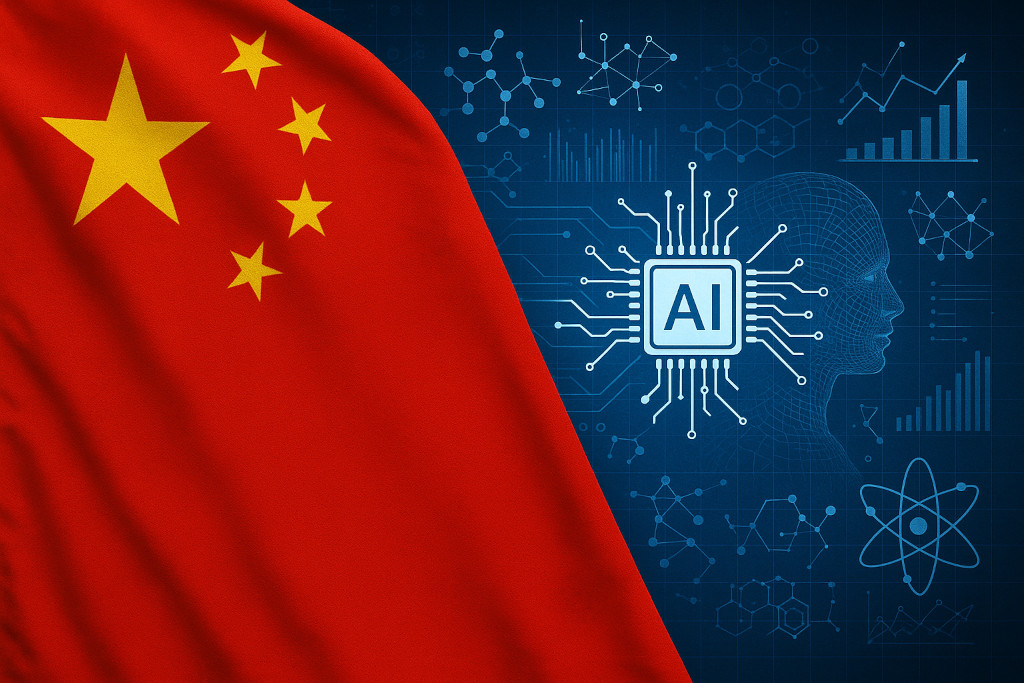China is accelerating its push toward technological self-reliance through bold investments in AI, science, and innovation policy. In March 2025, a series of official statements, strategic plans, and regulatory frameworks confirmed the country’s deepening commitment to leading the next wave of global tech advancement.
🧭 Strategic Direction & Policy Priorities
At the 2025 National People’s Congress, Chinese leaders emphasized a renewed focus on innovation and national tech development:
- China will increase support for AI applications, deep tech R&D, venture capital expansion, and strategic science programs.
- Priority sectors include:
- Biomanufacturing
- Quantum technologies
- Embodied AI
- 6G wireless infrastructure
- New national laboratory models are being proposed to promote interdisciplinary collaboration and empower young scientists with greater autonomy and funding.
- Efforts are underway to enhance data infrastructure and enable cross-border data flows, which are critical for AI research and cloud innovation.
📌 Source: Reuters, March 2025
🎓 Research Expansion & Education Initiatives
China is scaling both foundational and applied AI research. New guidelines issued in March outline key directions:
- The „2025 Annual Projects Guide“ from the National Natural Science Foundation of China (NSFC) prioritizes:
- Explainable AI
- Generalizable AI methods
- Brain-inspired AI
- Applications in biomedicine, healthcare, and materials science
- Universities across China are launching curricula based on the DeepSeek AI model, integrating AI literacy with discussions on:
- Ethical use
- Data privacy
- AI safety concerns
- These educational efforts aim to nurture AI talent pipelines while aligning with global discussions on responsible AI development.
📌 Source: Georgetown CSET Report
🧾 Regulation & Governance
China continues to pursue a dual-track strategy of promoting innovation while reinforcing control over digital content and platforms:
- New rules on AI-generated content labeling take effect in September 2025. These measures require:
- Visible tags on synthetic content
- Metadata-based identification for platforms and regulators
- These guidelines form part of China’s wider efforts to govern the fast-growing ecosystem of generative AI tools and large models like DeepSeek.
- Analysts see this as a balancing act: incentivizing innovation, while mitigating societal risks such as misinformation and deepfakes.
📈 Background: R&D Investment Surge
Behind these policy moves lies a growing budgetary commitment:
- China’s R&D spending increased by 10% in early 2025.
- Over ¥350 billion ($49B) is being directed toward scientific and tech innovation.
- These funds are primarily supporting basic research, cutting-edge lab equipment, and next-gen computing infrastructure.
The focus aligns with China’s broader ambition to reduce dependency on foreign technology, especially amid increasing geopolitical competition.
🧩 Summary
China’s March 2025 announcements underline a coordinated push to become a global AI and science powerhouse. Through targeted investments, regulatory safeguards, and talent development, the country is betting big on the technologies that will define the next decade.
📰 Sources:
- Reuters – March 5, 2025
- Reuters – February 21, 2025
- CSET Georgetown – March 2025

